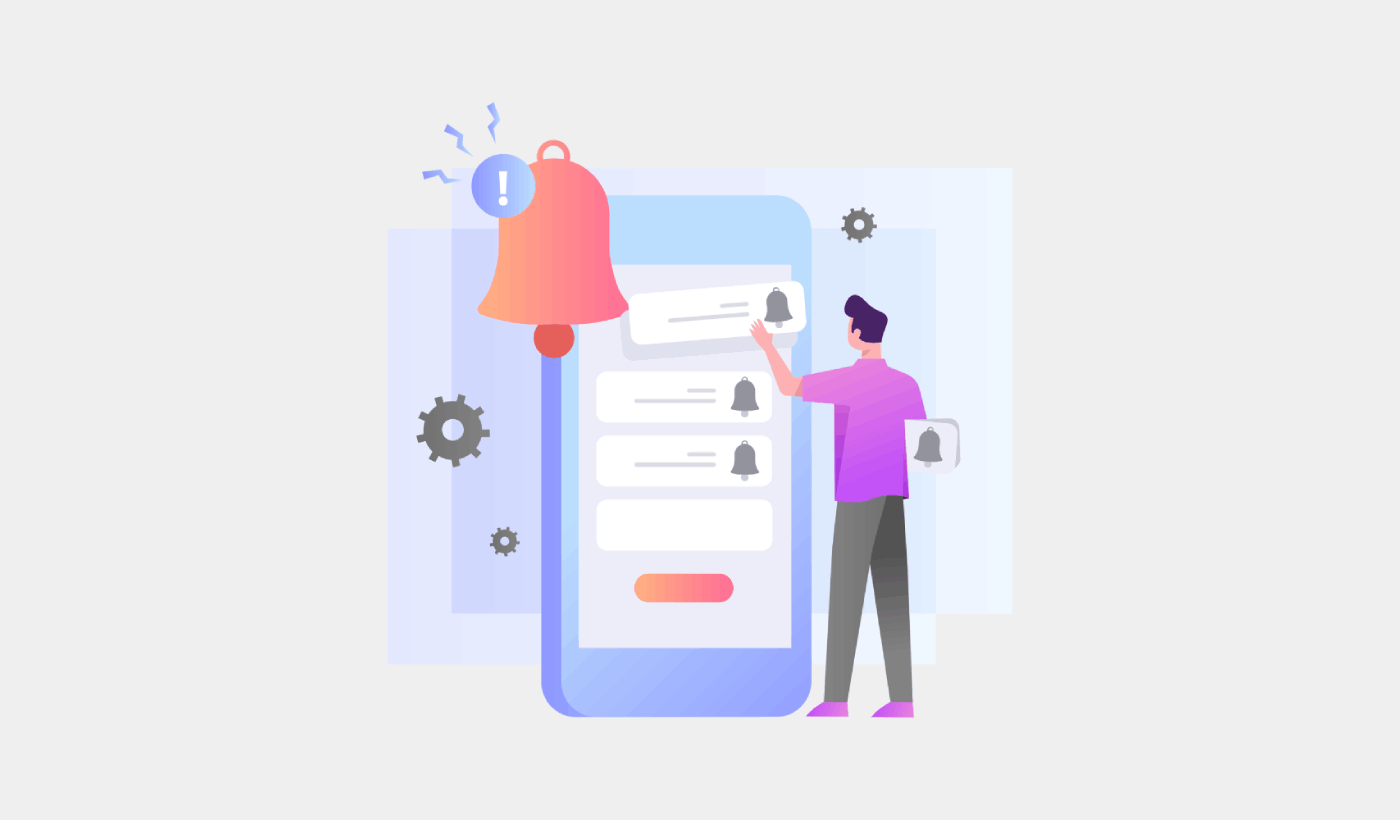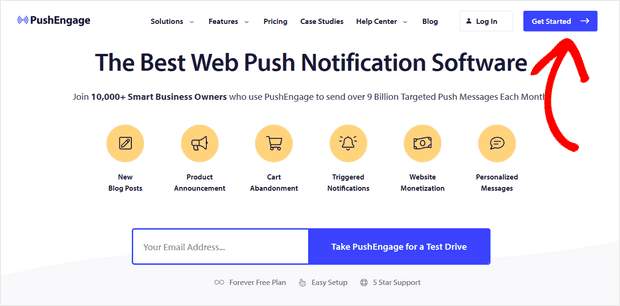Looking for a simple way to add Webflow push notifications?
That’s a really great idea. Webflow is a powerful website builder that enables you to create instant websites. It’s super easy to create a website and start selling a product or a service.
But once your site is live, how do you get traffic? How do you build engagement? How do get more sales?
That’s where push notifications can be super effective as a marketing tool because they can generate repeat traffic and sales without having to run paid ads. You can also create automated campaigns to boost engagement and sales with very little effort.
But the painful bit is that there are hardly any articles out there that show you how to add Webflow push notifications.
Don’t worry! In this article, we’re going to show you step-by-step how you can add push notifications to a Webflow site in less than 10 minutes.
Let’s dive in.
How to Install Webflow Push Notifications
Adding push notifications to a Webflow site is quite simple. Just follow the steps in this article. If you follow every step, by the end of this article, you should be able to send push notifications like this one:
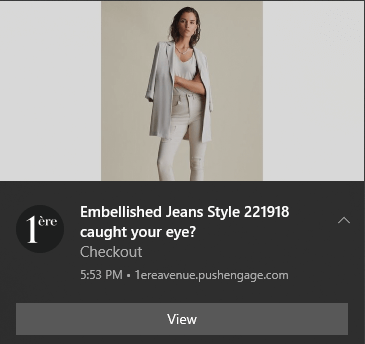
Let’s go!
Step #1: Set Up Your PushEngage Account
Head over to the PushEngage home page and click the Get Started button:
You can try out PushEngage for free. If you’re running a small blog that needs repeat traffic and engagement, that’s probably good enough. But if you’re serious about sales, you should get the Enterprise package and unlock the automated campaigns.
Once you’ve signed up for your PushEngage account, head over to your PushEngage dashboard and go to Site Settings » Site Details:
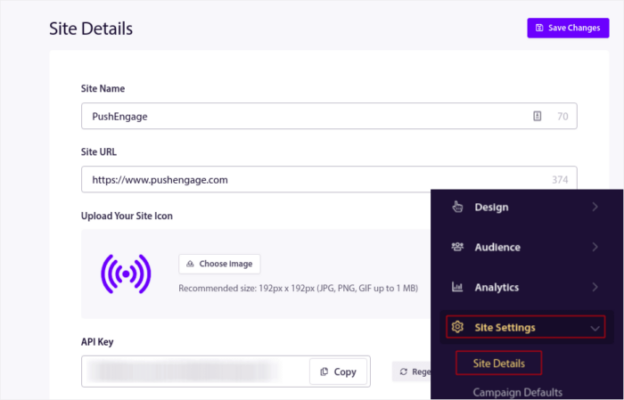
You can set your logo, site name, and site URL here. It’s really important to sort this stuff out right now so that you can test your entire setup later.
Step #2: Get the Installation Code from PushEngage
To install push notifications, you’ll need to get an installation code. In your Site Settings screen, scroll down and click on the Click Here For Setup Instruction button:
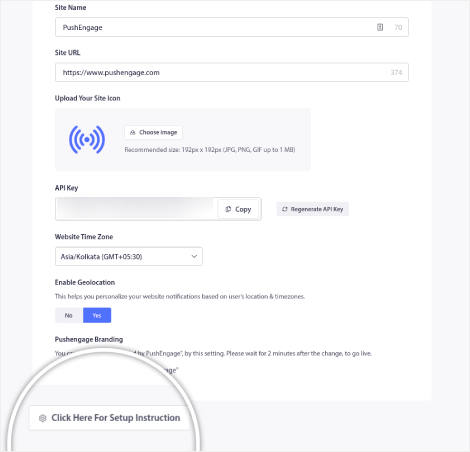
Then, click on the Any Site tab:
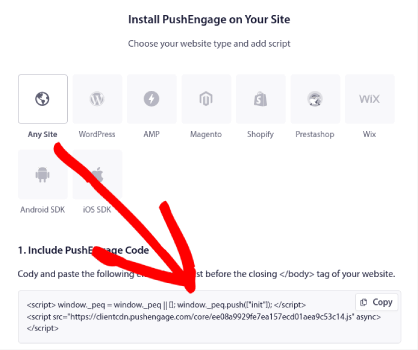
And copy the Javascript code snippet. You’ll need it soon.
Step #3: Place the Installation Code For Webflow Push Notifications
Log in to your Webflow dashboard and in the site builder, press A to open up the Add Panel and an Embed element:
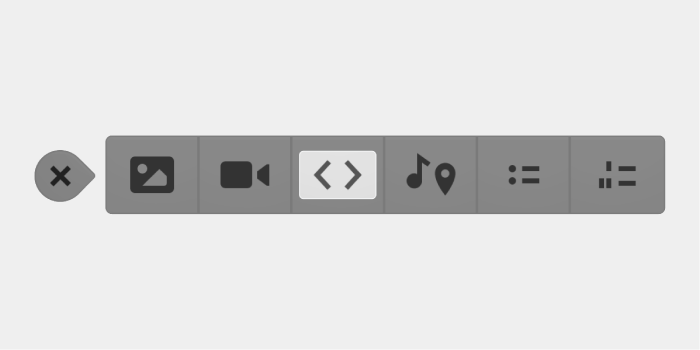
Then, simply paste the code snippet you got from your PushEngage dashboard. This is typically where you would place your Google Analytics code, Facebook Pixel, and other tracking code as well. When you’re done, hit Save.
Step #4: Configure the PushEngage Opt-In
Now, head back to your PushEngage dashboard. Go to Design » Popup Modals and select the optin of your choice:
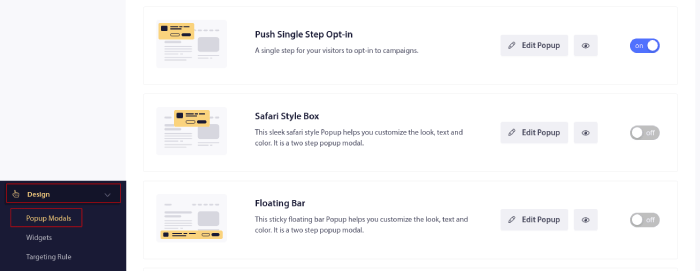
The idea here is to give your visitors a solid reason to subscribe. If you need some help with that check out our article on how to create a custom push notification opt-in.
And if you’d like some templates to get started, you should check out this article on high-converting push notification opt-ins.
Step #5: Create Your First Campaign
Now that your Webflow site can send push notifications, you should create an actual campaign.
Webflow isn’t really a frivolous free site builder. It’s an advanced builder for custom web development. So, you’re likely going to sell a product on your landing page. If that’s you, you should definitely set up an abandoned cart reminder for your store.
An abandoned cart campaign helps generate extra revenue by converting abandoned carts. It’s a simple reminder that sells a lot of products on autopilot. So, it’s a great campaign to support any landing page that brings in direct sales.
Just head over to your PushEngage dashboard and go to Campaigns » Triggered Campaigns » Create A New Triggered Campaign:

And then, select the Cart Abandonment campaign template:
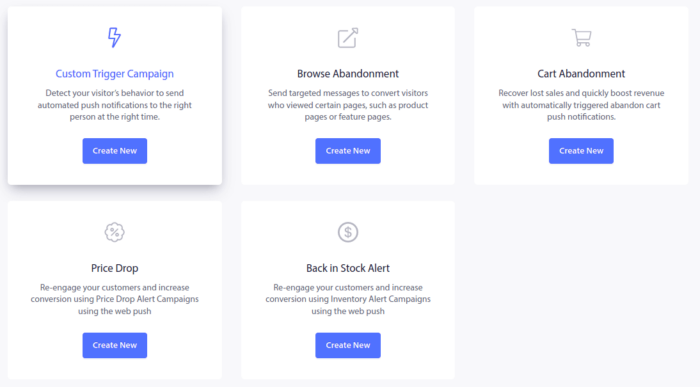
If you’re new to creating automated marketing campaigns, you can simply follow along with our article on how to set up an abandoned cart push notification campaign. Follow every step, and you can set up push notifications like this one:

And just in case you’re wondering, you don’t need to be a household name brand for your push notification campaigns to be effective. In fact, PushEngage was built to help small businesses grow using push notifications.
But before you start marketing your site, you should fix any issues with your push notification subscription process. Check out this article on testing your push notifications. If everything’s working perfectly, you’re done!
What To Do After Adding Webflow Push Notifications?
That’s all for this one, folks!
You just added push notifications to your Webflow site. Then, you created a powerful push notification campaign to boost your growth. All that, in less than 10 minutes!
Check out how to create other automated push notification campaigns as well. Most push campaigns are simple and effective. So, we recommend setting up multiple campaigns for your site. Here are a few great ones to start with:
- How to Automatically Send RSS Push Notifications
- How to Setup Cart Abandonment Push Notifications Using GTM
- How To Schedule Push Notifications the Easy Way [5 Min. Guide]
And if you haven’t already, get started with PushEngage. PushEngage is the #1 push notification software in the world. So, your campaigns are in safe hands.
